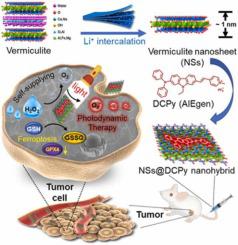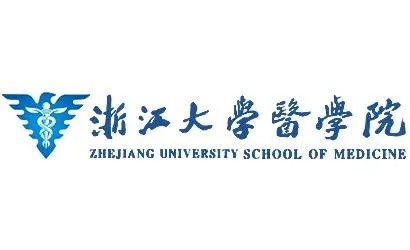The University of New South Wales
Bonsai-inspired AIE nanohybrid photosensitizer based on vermiculite nanosheets for ferroptosis-assisted oxygen self-sufficient photodynamic cancer therapy
Nano Today ( IF 18.962 ) Pub Date : 2022-03-30 , DOI: 10.1016/j.nantod.2022.101477
Xinghua Yu , Ying-Chuan Zhang , Xing Yang , Ziyang Huang , Tianfu Zhang , Liusi Yang , Wenjing Meng , Xiaotong Liu , Ping Gong , Alessandra Forni , Zheng Zheng , Bilu Liu , Pengfei Zhang , Lintao Cai , Ben Zhong Tang
 |
Oxygen-dependent photodynamic therapy (PDT) for cancer treatment based on aggregation-induced emission luminogen (AIEgen) photosensitizer shows limited efficiency in the hypoxic tumor microenvironment (TME). To overcome tumor hypoxia-induced PDT resistance, a bonsai-inspired oxygen self-sufficient photodynamic cancer therapeutic system was developed based on AIEgen/vermiculite nanohybrid. Ultrathin nanosheets (NSs) were synthesized by lithium-ion intercalation from potting soil vermiculite for AIEgen photosensitizer (DCPy) loading through electrostatic attraction to produce NSs@DCPy (nano bonsai). When NSs@DCPy was absorbed by hypoxic the tumor and exposed to white light radiation, the NSs@DCPy could not only produce 1O2 and·OH but also catalyze the H2O2 to generate O2 for alleviating hypoxia significantly improving PDT efficacy. Surprisingly, NSs@DCPy could induce ferroptosis of the tumor by iron overload and depleting glutathione (GSH). Therefore, we provide a bonsai-inspired AIEgen-vermiculite nanohybrid platform for ferroptosis-assisted oxygen self-sufficient photodynamic cancer therapy.


